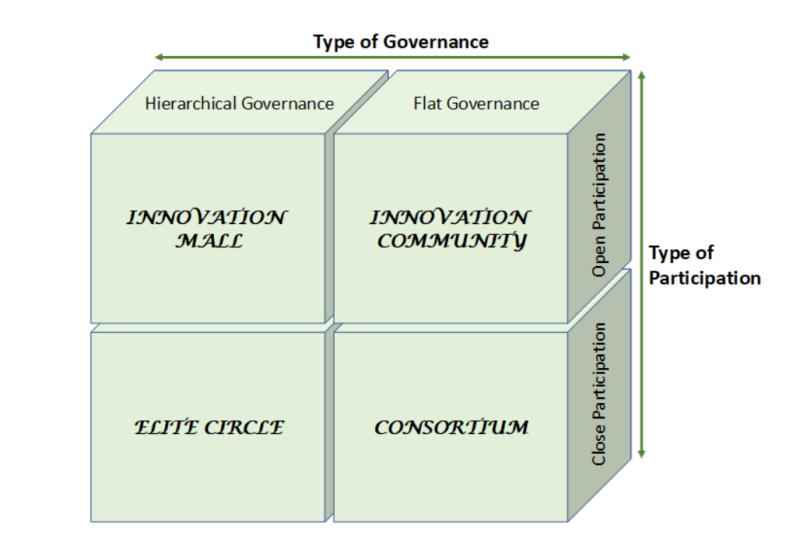Collaboration
Collaborative Opportunities
As per one Harvard Business Review article, now a days, business firms team up with multiple partners to create new technologies, products, and services. They have realized that innovation cannot be done or sustained in isolation and the best way is to leverage the capabilities of other stakeholders. The article proposed four modes of collaboration that emerge as four distinct quadrants on the differing scale of governance (hierarchical/flat) and participation (closed/ open).

The extent of participation in collaboration may be either be closed or open, while the governance may fall under the category of flat or hierarchical. An innovation mall collaboration is characterized by open participation and hierarchical governance, wherein the problem/solution can be posed/proposed by anyone but the problem posing company chooses the solution. In above, if anyone can decide which solution to use (the highest form of openness and decentralization), the collaboration is classified as innovation community.
A closed/private group of participants that jointly identifies problem, operate and choose solution is called consortium, while elite circle follows hierarchical governance and closed network (wherein one firm select the participants and identifies the solution). The decision on which mode of collaboration to choose may depend upon the challenges and advantages, capability, strategy, structure, and assets of the firm.
Details of Stakeholders

